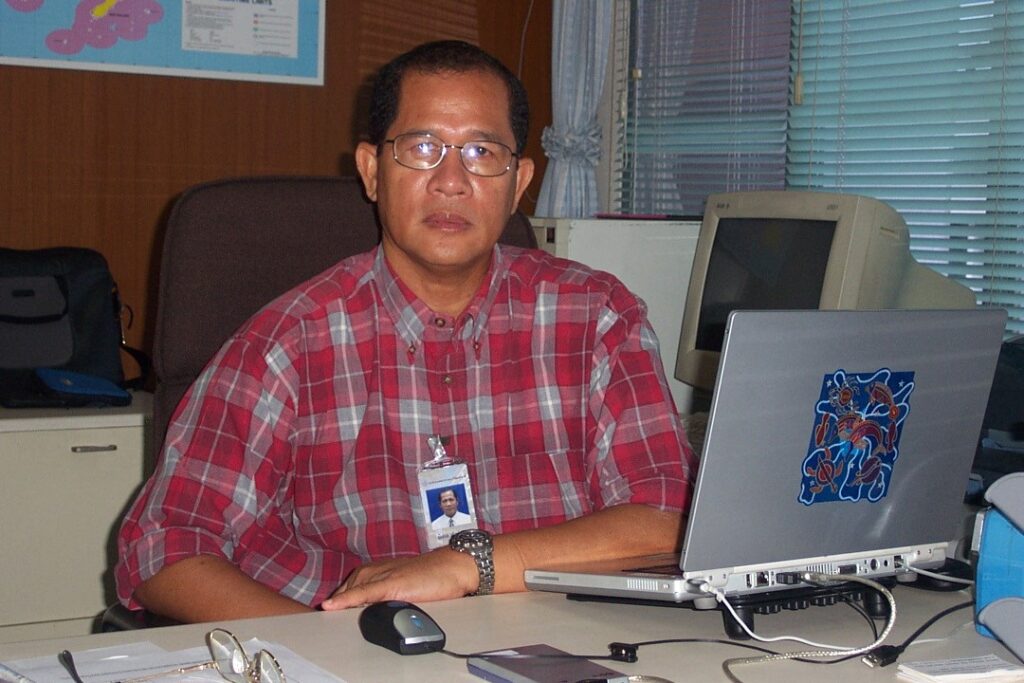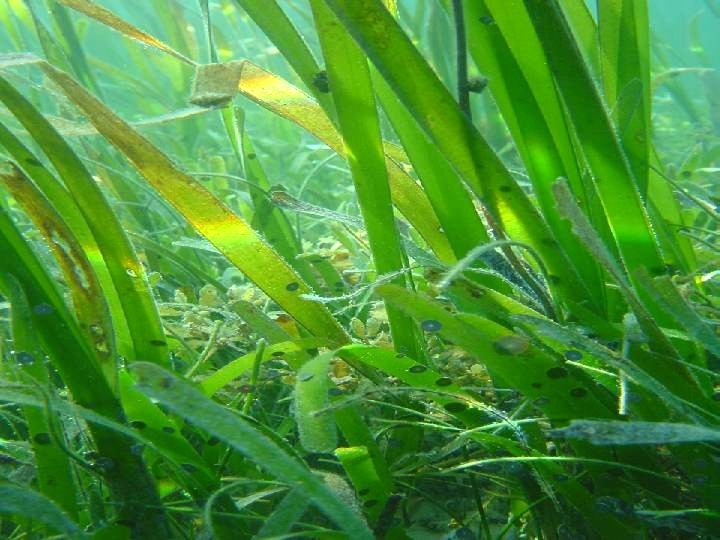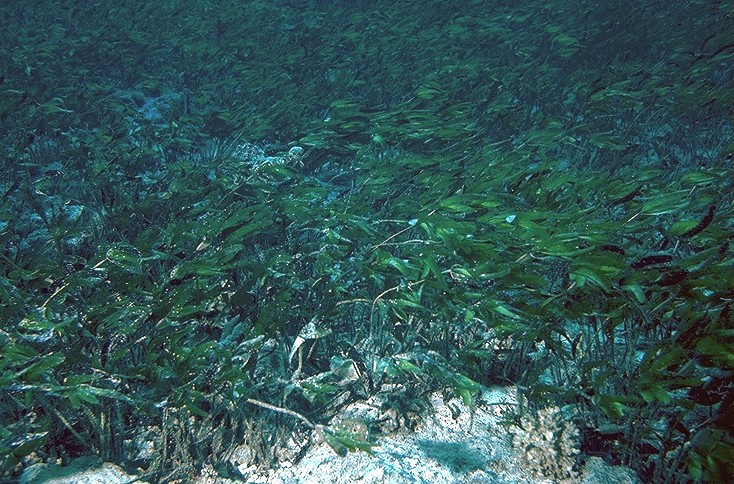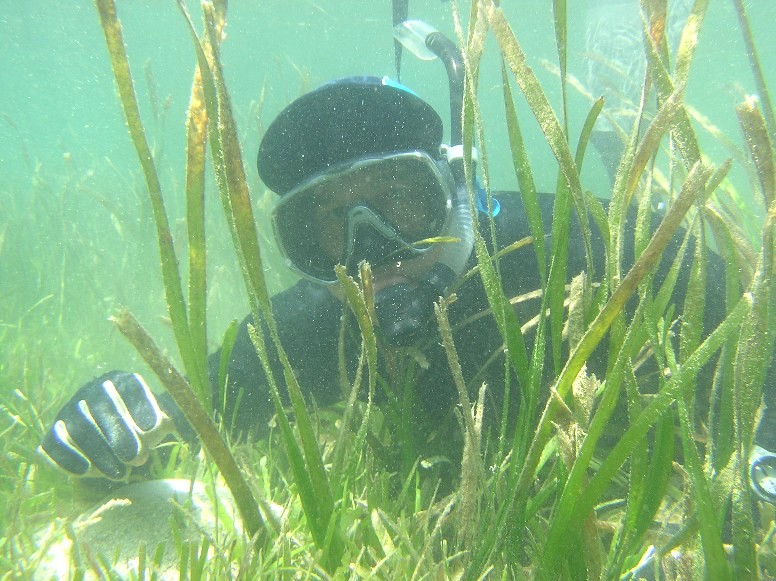by Henrylito D. Tacio
Photos by Dr. Miguel Fortes
No one pays attention to the lowly seagrasses because most people think they are “useless.”
“Despite their high biodiversity and abundance, seagrass habitats are still poorly understood in our country,” said Dr. Miguel D. Fortes, the country’s foremost expert on seagrasses. “Hence, it appears only marginally useful when, in fact, the ecosystem plays significant economic and ecological roles.”
Dr. Fortes, a retired professor of the Marine Science Institute of the University of the Philippines in Diliman, Quezon City, considered seagrasses as among the most productive of coastal ecosystems, matching coral reefs and mangroves in terms of environmental and economic importance. “As meadows, seagrasses are an important link between land and ocean and support a high primary production,” he pointed out.
Dr. Theresa Mundita S. Lim, when she was still the director of the Biodiversity Management Bureau, decried: “In spite of the ecological and economic value of seagrasses, between 30 percent to 50 percent of the seagrass beds have been lost due to industrial development, ports, and recreation in the last 50 years.”
Something must be done soon. “If seagrass beds continue to disappear, there will be serious economic and ecological consequences,” warns the regional office of the Bureau of Fisheries and Aquatic Resources (BFAR) in Davao City.
To raise cognizance of the importance of seagrasses, March is designated as Seagrass Awareness Month. “Seagrass is not studied enough although its role in the marine ecosystem is crucial,” Dr. Fortes said.
Seagrass meadows are rated the third most valuable ecosystem globally (on a per hectare basis), only preceded by estuaries and wetlands.

“Underwater meadows of seagrass offer important protection against pollution to both humans and coral reefs,” said news dispatch released by the Agence France-Presse (AFP), based on a study published in the journal Science.
“Places with healthy seagrass – where sponges, clams, small fish and other filter feeders thrive – can reduce bacteria that is harmful to both people and marine life by up to 50 percent,” said the news dispatch.
Cornell University’s Dr. Joleah Lamb, the lead author of the study, was quoted as saying: “The seagrass appears to combat bacteria, and this is the first research to assess whether that coastal ecosystem can alleviate disease associated with marine organisms.”
Globally, seagrass meadows are declining by about seven percent each year since 1990, according to researchers.
In the Philippines, the rapid disappearance of seagrass is due to the increasing population’s multiple demands upon the country’s marine environment as a source of food, avenues of transportation, receptacles of waste, living space, and source of recreation and aesthetics pleasures.
The seagrass ecosystem is likewise adversely affected by the mining of industrial minerals, oil spills caused by accidents, operational shipping, refinery activities, dredging, and illegal associates.
Dr. Fortes believed seagrasses are fast disappearing in this part of the world for economic reasons. “Huge tracts of these productive habitats are being dredged, filled, polluted, exploited, converted to other coastal uses or simply being destroyed, all in the name of economic development,” deplored Dr. Fortes.
Its not happening only in the Philippines but in other members of the Association of Southeast Asian Nations (ASEAN). He identified deforestation as another culprit on why seagrasses are threatened.
Dr. Fortes, who wrote Seagrass: A Resource Unknown in the ASEAN Region, noted that most of Southeast Asia’s forests had been reduced by logging and slash-and-burn agriculture, among other factors. Deforestation and the resulting runoffs cover seagrass beds with silt.

Seagrasses are neither algae nor seaweeds. Neither are they true grasses. They are monocotyledonous plants. Left alone and not disturbed in the quiet salty water of coastal zones, they form dense meadows resembling more familiar undulating grasslands in the uplands.
The seagrass is one of the most important components of the coastal ecosystem. It reproduces through rhizomes and seeds. It produces seeds annually, which are dispersed by tidal currents.
The Philippines has 16 species of seagrasses thriving along its coasts. This makes the country have the second-highest species of seagrasses around the world – after Western Australia, which has more than 17 species of seagrasses. The Philippines has more seagrass species than Indonesia, Malaysia, and Brunei.
Dr. Lim said the Philippines has a total seagrass area of 27,282 square kilometers, which are widely distributed throughout the country: from Bolinao Bay (Pangasinan) in the north, Palawan, and the Cebu-Bohol-Siquijor area to the center, and Zamboanga and Davao in the South.
“Seagrasses are the least studied among the habitats in our coastal zones,” Dr. Fortes deplored. “As such, we know less than we need to in order to use them in solving coastal environmental problems as well as societal problems.”
Unknowingly, seagrasses are a source of salt, soda, warming materials, and useful chemicals. They are used in basket-weaving, mattresses stuffing, and beddings. They substitute for thatch and upholstery material as well as for cotton used in the manufacture of nitrocellulose.
Seagrasses are also used as fodder for livestock. They are likewise a significant component of sea farming and sea ranching. The high primary production rates of seagrasses are closely linked to the high production rates of associated fisheries.
Among the diversified species found in the seagrass beds are fishes, sea cucumbers, sea urchins, crabs, scallops, mussels, and snails. Shrimps spend the early stages of their lives in seagrass areas.

Large animals like sea cows (dugong) and green sea turtles graze extensively in seagrass meadows. Seahorses, a tourist attraction and of medicinal value, reside in seagrass beds. A study done in five seagrass sites in the country identified a total of 1,384 individuals and 55 species from 25 fish families.
“All these have economic value mostly as food and aquarium specimens,” Dr. Fortes said. “Five times as many fish live in seagrass beds as above sea floors of mud, shells, and sand.”
As stated earlier, seagrass beds are known for being sewage filters. They are noted for their ability to trap and bind organic and inorganic sediments. In addition, they are planted along coastal lines to buffer winds, control wave erosions, and regain the lost productivity of degraded fishing grounds.
The Philippines may help mitigate climate change by sequestering significant pollutant carbon dioxide from fossil fuel-run vehicles. This can be done by tapping its huge carbon stock potential from its ocean’s seagrasses, according to a research arm of the Department of Environment and Natural Resources (DENR).
Dr. Fortes agreed. “Seagrass very effectively (better than forests) sequesters, stores carbon dioxide from the air, hence, mitigating global warming and climate change. However, if unmanaged, it releases carbon dioxide and heat again back into the air,” he explained.
In a paper presented during the first National Conference on Seagrass Management, Research and Development, Dr. Fortes suggested at least three environmental concepts for better management of the resource: preservation, conservation, and production intensification.
Preservation or non-use guarantees the continued survival of seagrass beds or meadows, which may be available for scientific and educational purposes only.
Conservation or wise-use means maximum yield in minimum time. In time, the seagrass area expands and becomes a renewable resource.
Production intensification can be done through large-scale plantings and so-called “afforestation.” This transforms biologically desolate and barren impacted subtidal areas into seagrass beds with appropriate techniques.
“As meadows, seagrasses are an important link between land and ocean and support a high primary production,” Dr. Fortes reminded.

